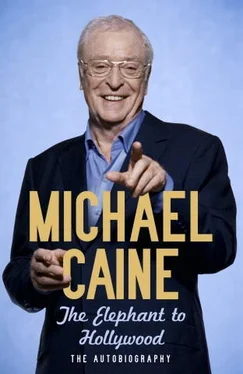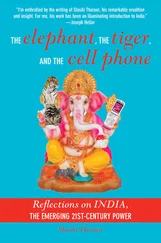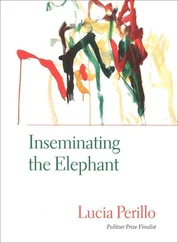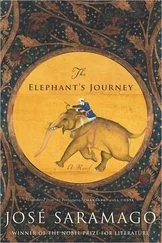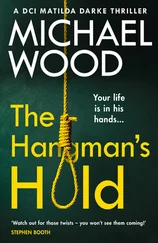Michael Caine - The Elephant to Hollywood
Здесь есть возможность читать онлайн «Michael Caine - The Elephant to Hollywood» весь текст электронной книги совершенно бесплатно (целиком полную версию без сокращений). В некоторых случаях можно слушать аудио, скачать через торрент в формате fb2 и присутствует краткое содержание. Город: London, Год выпуска: 2010, ISBN: 2010, Издательство: Hodder, Жанр: Биографии и Мемуары, на английском языке. Описание произведения, (предисловие) а так же отзывы посетителей доступны на портале библиотеки ЛибКат.
- Название:The Elephant to Hollywood
- Автор:
- Издательство:Hodder
- Жанр:
- Год:2010
- Город:London
- ISBN:978-1444700015
- Рейтинг книги:4 / 5. Голосов: 1
-
Избранное:Добавить в избранное
- Отзывы:
-
Ваша оценка:
- 80
- 1
- 2
- 3
- 4
- 5
The Elephant to Hollywood: краткое содержание, описание и аннотация
Предлагаем к чтению аннотацию, описание, краткое содержание или предисловие (зависит от того, что написал сам автор книги «The Elephant to Hollywood»). Если вы не нашли необходимую информацию о книге — напишите в комментариях, мы постараемся отыскать её.
The Elephant to Hollywood — читать онлайн бесплатно полную книгу (весь текст) целиком
Ниже представлен текст книги, разбитый по страницам. Система сохранения места последней прочитанной страницы, позволяет с удобством читать онлайн бесплатно книгу «The Elephant to Hollywood», без необходимости каждый раз заново искать на чём Вы остановились. Поставьте закладку, и сможете в любой момент перейти на страницу, на которой закончили чтение.
Интервал:
Закладка:
23
What It’s Really All About
With longer and longer gaps between films I’ve been able to spend more time on the other pleasures in life – the family, friends, my garden and cooking are just some of these, but one of the greatest has been travelling. I’ve been all over the world on location and seen some wonderful places (and some bloody awful ones, too), but when you’re working you can’t be as relaxed about sightseeing as when you’re on holiday. So with a less hectic schedule, Shakira and I have been making up for lost time. It’s been a chance for us not only to revisit our favourite spots, but to explore some new ones, too – and one of the most exciting for us was the trip we took to India in 2005.
Like everyone else, I had pre-conceived notions of what India would be like, both good and bad. I thought I would be outraged by the extraordinary wealth of the few and the grinding poverty of the many, but it wasn’t like that – well, it was in some respects, but in others it wasn’t. Yes, we saw examples of extreme wealth and extreme poverty, but this was a country in which many of the richest people really do have a sense of caring for their poorer neighbours and it’s a country on the move, with a burgeoning middle class, a highly educated workforce with tremendous IT skills, and a real sense of enterprise.
We were travelling in august company. With us was the President of Iceland, Ólafur Grimsson, and his wife Dorrit, both friends of ours, who were there on an official visit, and also Irina Abramovich, the ex-wife of Roman Abramovich, the owner of Chelsea Football Club. It turned out that my claim to fame in India is as the husband of Shakira – although I did hear a rumour that they have remade Get Carter and The Italian Job in Hindi, so maybe the next time I go I will have achieved some status of my own.
Because we were with such a high-powered group, we were treated like royalty. Our first dinner was in the penthouse suite in the Taj Palace Hotel in New Delhi as guests of Mrs Sonia Gandhi, the leader of the Congress Party, and the following day we were invited to have tea with the President, Dr A. P. J. Abdul Kalam. His palace, which had been built by the British, was unbelievably grand and stood at the end of an enormous boulevard. All I could think of as I gazed at it was what confidence, insanity and conceit the British must have had to build such pompous edifices to an endless future, surrounded, as they were, by some of the poorest people on the face of the earth. Society in India has changed for the better since those days, but buildings like that still look out of place to me.
The President himself was particularly interesting to me on two counts: first, he was a Muslim, despite the fact that only twenty per cent of India’s population is Muslim, and second, he was a scientist who had played a major part in India’s nuclear missile programme. After tea he showed us round the enormous rose garden. It occurred to me that it occupied a huge amount of space in such an overcrowded city and, perhaps unwisely, I pointed out the injustice of it. He smiled at me innocently. ‘Ah,’ he said. ‘The British built it.’ ‘Ah,’ I said. ‘Of course.’ I was put politely in my place.
The following day we had tea with the Prime Minister, Dr Manmohan Singh, and got another surprise: he was a Sikh, the first non-Hindu Prime Minister of India. Sikhs are an even smaller religious minority than the Muslims and it was a Sikh who had assassinated Mrs Gandhi. I didn’t speak to the Prime Minister much – it was well above my pay grade – and left most of the talking to Ólafur, but I did reflect on the strides India had taken in religious tolerance since Independence – the leader of the Congress party, Sonia Gandhi, is an Italian Catholic by birth, the President of India is a Muslim and the Prime Minister is a Sikh. And all this in a country where eighty per cent of the population is Hindu.
One of the most remarkable days we spent in New Delhi was being shown round the former home of Mrs Indira Gandhi, who had been killed by her own Sikh guards in her back garden. The house and garden, which are relatively modest, have been kept exactly as they were on the day she died, as a monument to her. Only two items on display relate to the tragedy of the Gandhi family: the clothes Mrs Gandhi was wearing when she was assassinated, and the clothes worn by her son, Rajiv, when he was blown up by a female suicide bomber as she knelt down to kiss his feet in a gesture of respect. After we had been round the house, we were taken out into the garden. The guide led us along a path and then stopped, pointing down to a small bridge with water running underneath it. At his feet there was a fresh flower. ‘This’, he said, ‘is the spot where Mrs Gandhi was shot.’ And then we walked another twenty or thirty paces further along the path and he said, ‘And this is where Mr Peter Ustinov was standing.’ Peter ? None of us had ever heard that Peter Ustinov had been there. ‘What was he doing there?’ I asked, completely confused. ‘He was interviewing her for the BBC,’ said the guide. ‘That was why Mrs Gandhi had come out to the garden in the first place.’ A complete surprise to me.
My next surprise was the following day. We were visiting the gardens of a temple when a monkey leapt out of a tree and stole the glasses right off my nose. It’s a big shock, I can tell you, having your glasses stolen by a monkey, but now I always carry a spare pair just in case there are monkeys around.
After Delhi, we travelled to Agra by car. It took six long hours, but it was extraordinary to see the other side of India gradually unfold in front of our eyes as we left the city behind. We did indeed have to drive round a cow that had decided to sit in the middle of the road and we also had to stop at a railway crossing for a train to go by and, yes, people really did travel on the roof and cling on to the sides of the carriages. But all this was just preparation for something I had been looking forward to ever since my father – who had been a soldier in India – had told me tales of it: the Taj Mahal. We were staying in a beautiful hotel, Amar Vilas, which boasts that you can see the Taj Mahal from every room. I can vouch for this, although I would have preferred not to. I had obviously eaten something that disagreed with me (not, I hasten to add, from the hotel restaurant) and found myself confined to the toilet one afternoon. And, yes, you could even see the Taj Mahal from there…
That evening, Shakira and I strolled out onto the lawn for a first look at the Taj Mahal by moonlight. It really was one of the most beautiful sights I have ever seen – and certainly the most romantic. To add to the magic, along a road by the side of the hotel came a wedding celebration, singing beautifully as they proceeded with a full band, and illuminated by a thousand bright electric lights. Having had some experience with lighting problems back in my first job at Frieze Films, I immediately looked for the source of the electricity and eventually along it came, right at the end of the procession – an elephant pulling a huge electric generator. We were loving India!
The following morning we made our first visit to the Taj Mahal. You think you know what to expect – after all, it must be the most photographed building in the world – but nothing can prepare you for your first close-up sight of this monument. It is more breathtaking than any picture could ever capture. For the ladies of the party, Dorrit, Irina and Shakira, there was one place of pilgrimage they were determined to visit: what is now known as ‘Diana’s bench’ – the bench on which the troubled Diana sat during her last official visit as Princess of Wales. Each of them sat on it in turn while I took a picture of them, then one of the three of them together and then a passer-by took one of all of us. Honour being satisfied, we then walked through the beautiful garden and into the building itself. Its sombre atmosphere comes as a surprise, but of course the Taj Mahal is a mausoleum to Mumtaz Mahal – the most loved wife of Shah Jahan – who died in childbirth with their fourteenth child. It was an unforgettable experience.
Читать дальшеИнтервал:
Закладка:
Похожие книги на «The Elephant to Hollywood»
Представляем Вашему вниманию похожие книги на «The Elephant to Hollywood» списком для выбора. Мы отобрали схожую по названию и смыслу литературу в надежде предоставить читателям больше вариантов отыскать новые, интересные, ещё непрочитанные произведения.
Обсуждение, отзывы о книге «The Elephant to Hollywood» и просто собственные мнения читателей. Оставьте ваши комментарии, напишите, что Вы думаете о произведении, его смысле или главных героях. Укажите что конкретно понравилось, а что нет, и почему Вы так считаете.
